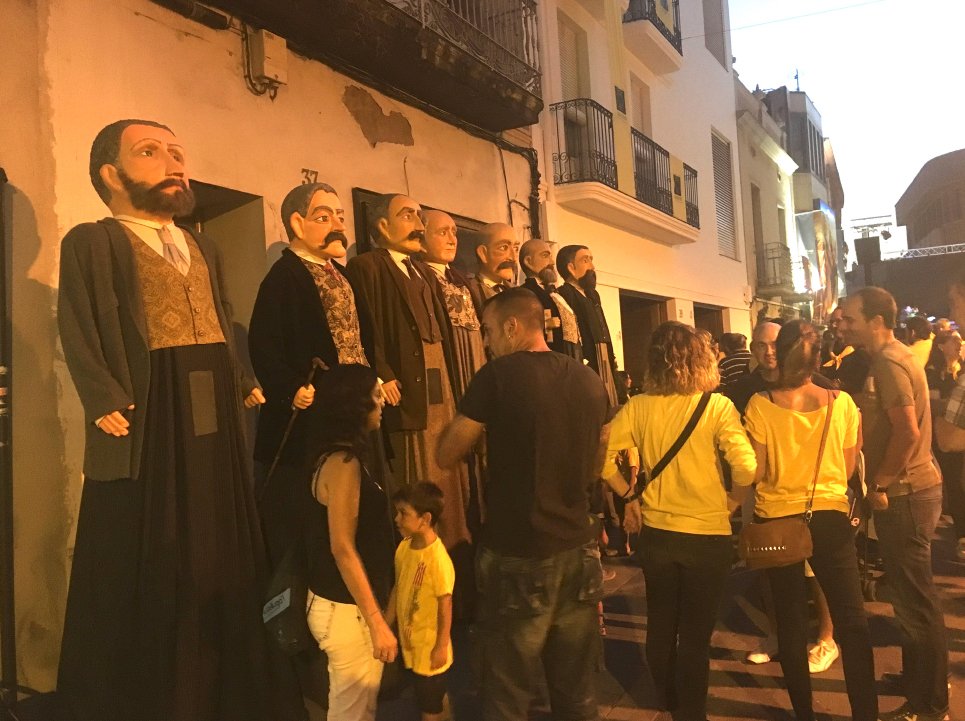Cava-cation
One of the most important realizations that I have had over the past two years is that we travel through wine. Pre-covid, I was a frequent traveler overseas, whereas these days I feel like my 30 minute drive to Mystic is as adventurous as I am able to get. But, I always take comfort in knowing I can pop open a bottle of wine and I can transport my mind and my tastebuds to anywhere in the world. Presently, I am sipping on what has to be one of my favorite categories of wines from one of my most cherished destinations: Cava from Catalonia. Yeah, baby! I’m talking bubbly wine from the northeastern part of Spain in the Penedès region.
Giant corks line the street of Sant Sadurni d’Anoia. An ode to Cava.
I’m not sure I even knew much about what Cava was prior to visiting the Penedès region for the first time, it was kind of at the beginning of my whole wine journey. I had booked a stay on an organic farm that had an airbnb and my fiancée and I drove all over visiting different Cava houses for tastings. We stayed about 40 minutes Southwest of Barcelona, near the small medieval town of Sant Sadurni d’Anoia, which dominates Cava production, making up about 95% of Catalonia alone. More than eighty producers contribute to this percentage including the big guys like Codorníu, the original Cava gods who were the first to create these bubbles in 1872. Of course, I much prefer the smaller guys like Parés Baltà, who kill it with organic and biodynamic production and have two badass women as their lead winemakers (a must stop for a tasting!).
Produced using the same method as Champagne (called the Traditional Method), Cava is the underrated hero of the bubbles world. Primarily made from three grape varietals Macabeo, Parellada and Xarel-lo, Cava is light to medium bodied and is fruity, zesty and plays well with most dishes. Delicate mineral notes tend to also shine through, which is a direct result of the limestone soil well known in Penedès. With the traditional method being used to produce Cava, the wine undergoes two fermentations. First being the creation of the base wine followed by the secondary fermentation in which the magic of the bubbles happens when sugar and yeast are added to the bottle and overtime the trapped gas creates all that fizzy goodness. Since we have already mentioned our other bubbly buddy Champagne, we can also compare the two in that Cava has shorter aging requirements. Cava has a minimum requirement to age for 9 months, whereas Champagne is15 months. This shorter aging results in a lighter, fruitier and friendlier on the wallet sparkling wine, whereas we tend to see heavier biscuit notes and a heftier price tag for Champagne.
Basking in all the glory of these gorgeous mineral rich vineyards.
Thousands of bottles of Cava aging in the cellars of Pares Balta.
But, I digress! Back to the wine travel transport shuttle! One of the stories we would hear as we traveled from vineyard to vineyard would be the tale of what almost was the end of the wine world as we know it. Phylloxera. These nearly microscopic sized insects first found their way into French vineyards after American vines had been brought over and planted in the vineyards. These stowaway pests ultimately decimated crops by attacking the roots. By the mid 1800’s these nasty critters had found their way to nearly every country, hitting Catalonia pretty hard. Resourceful wine makers in the area soon discovered that Phylloxera had an affinity to red grape varietals and farmers soon started to plant white varietals that had shown more resistance to the pest. More importantly what had ultimately saved the day was creating hybrid plants by grafting the rootstock of the naturally phylloxera resistant American Vitis Vinifera to the European vines (go horticulturalists!). By the early 1900s the wine industry got their footing back and Cava production had taken off!
Phylloxera costumes ready for the event.
Depicted local leaders of the 1800’s looking sharp for the parade.
By pure luck from the travel Gods, when we were visiting Sant Sadurni d’Anoia for the first time there also happened to be a celebration going on called “Festa de la Fil-loxera”. This was a multi-day nighttime festival that celebrated the regional victory over combatting the phylloxera. Around 1,000 onlookers lined the tight streets as we watched local actors parade around dressed as oversized grape vines, phylloxera and important local figures from the late 1800s. They would light fireworks off of their masks (something that would absolutely never be allowed to happen in the US) and sparks flew into the audience. I’m talking some real up-close 5 feet away, I have burns in my clothing type of sparks and smoke. The final, most epic part of the evening occurred in a large square where the final performance happened, and if I spoke Catalan I would be able to tell you what they said. But, I didn’t need to understand the language to understand the victory and joy that the locals felt in their history- I could feel it. No, literally, I felt it. Hundreds of bottles of Cava were being sprayed around us, on us and into the night sky. Standing there drenched in Cava, it hit me that I was surrounded by wine history. And as an American I felt pretty damn proud of our rootstock! Needless to say, we returned a second year to partake in the festivities and celebrate with the locals. So, when I say we travel through wine, we travel through so much history as well.
Base wine barrel aging at Codorniu.
As my glass of wine nears the end, so does this Cava memoir. So, what exactly am I drinking right now? Well, my go-to for a lot of wines are from the places I’ve been, like this Parés Baltà Brut, a beautifully refreshing dry sparkler aged 12 months on its lees with notes of green apple, citrus and pear. I am lucky enough to work for Spencer and Lynn, but even luckier as a consumer that they decided to stock this on the shelves! And on deck for my next Cava indulgence is the deliciously mineral driven At Roca Reserva 2018. With 20 months of aging on its lees, this bad boy is a bit richer but will not overwhelm the palate. Cava is just always…perfect.
Well, you’ve made it this far. Thanks for reading! May all your bottles of wine help you create your own special memories.
– Jessica






